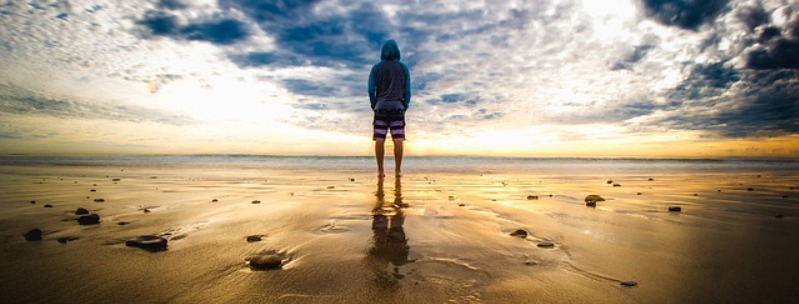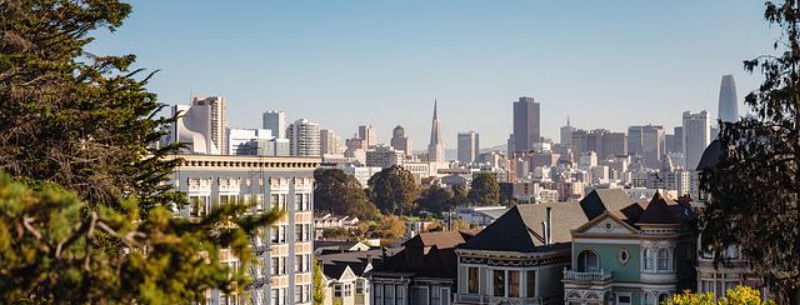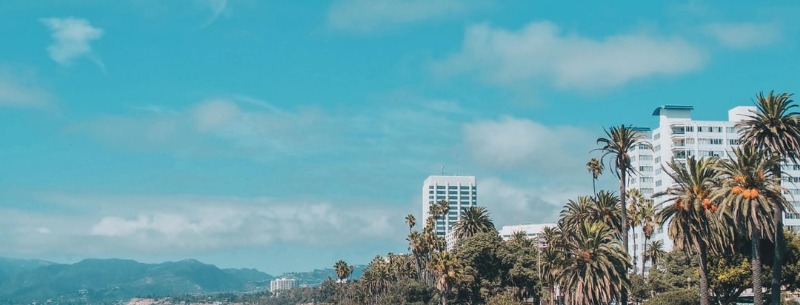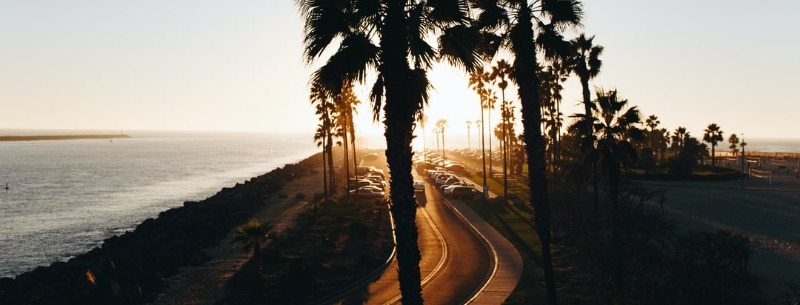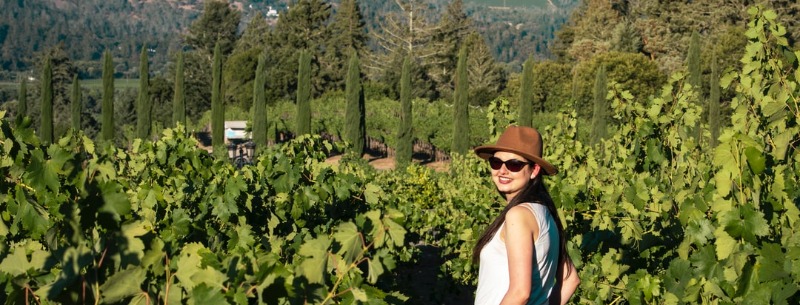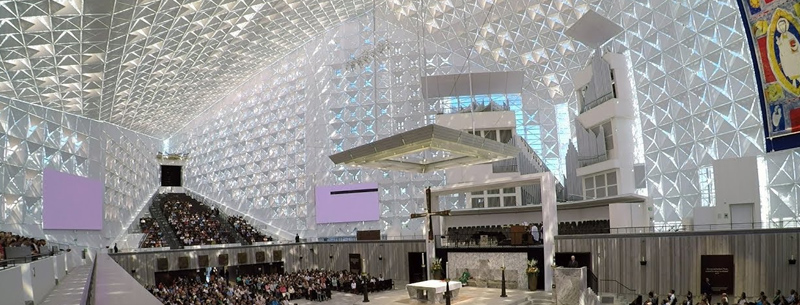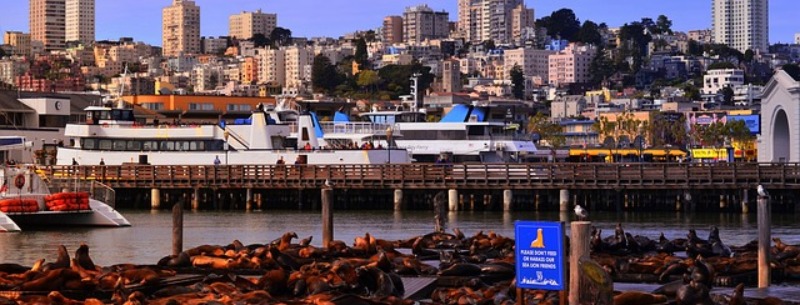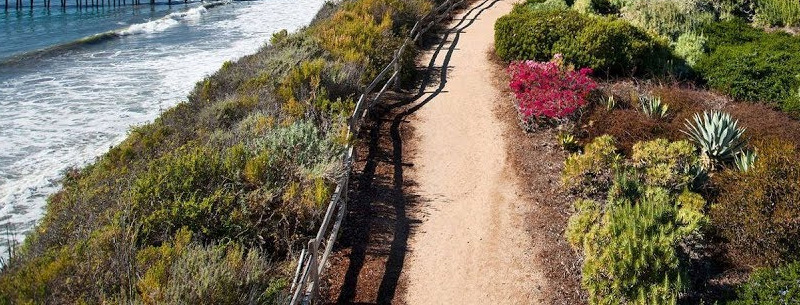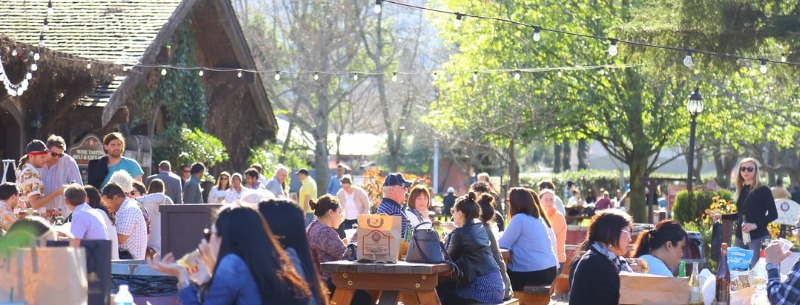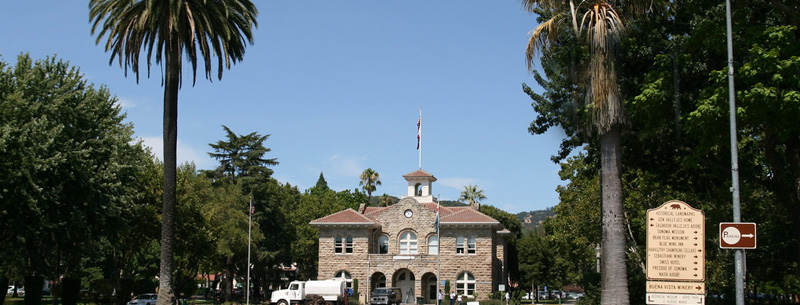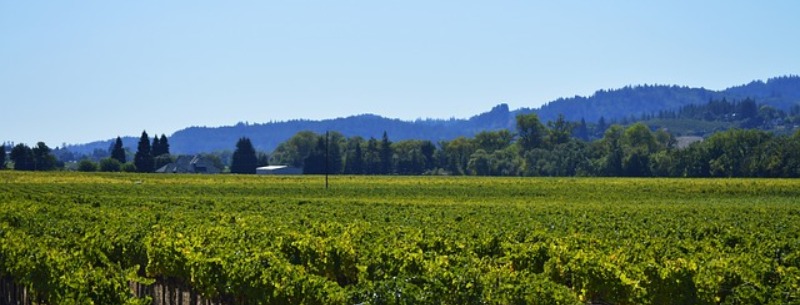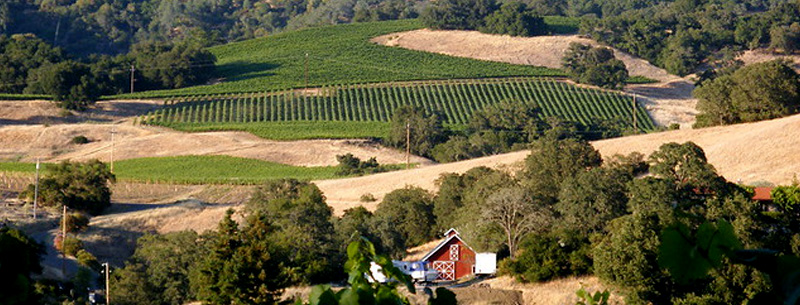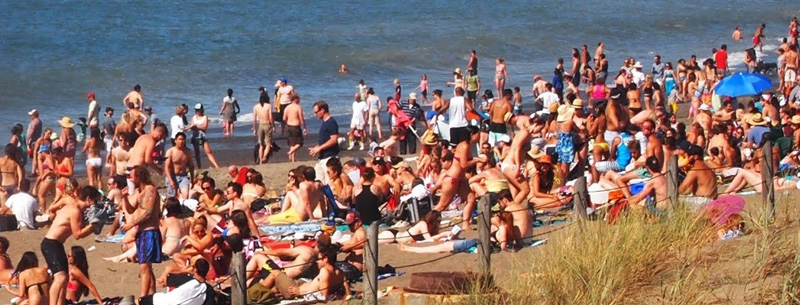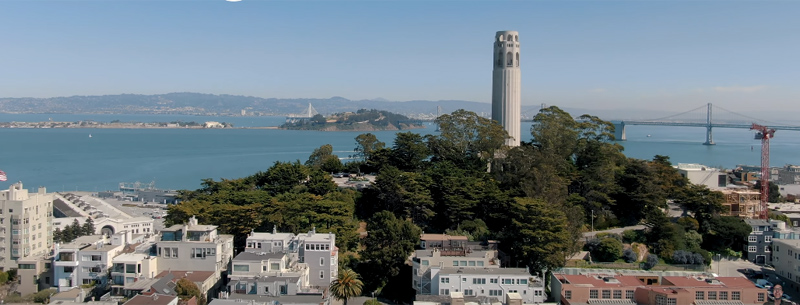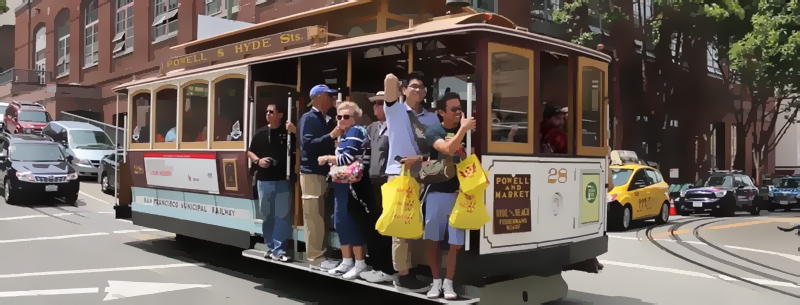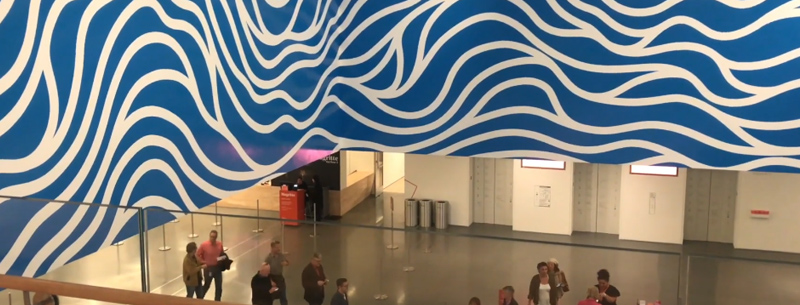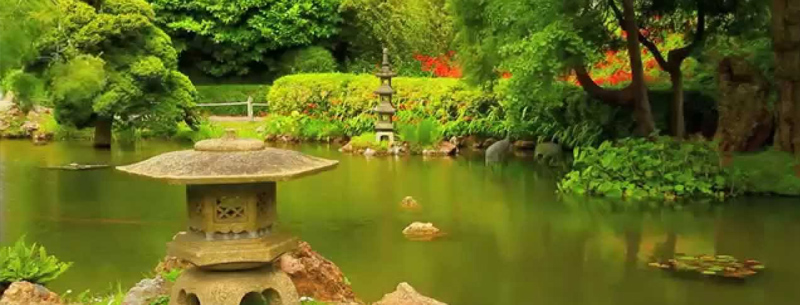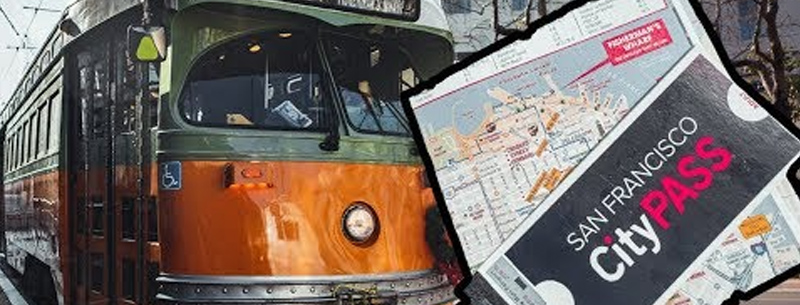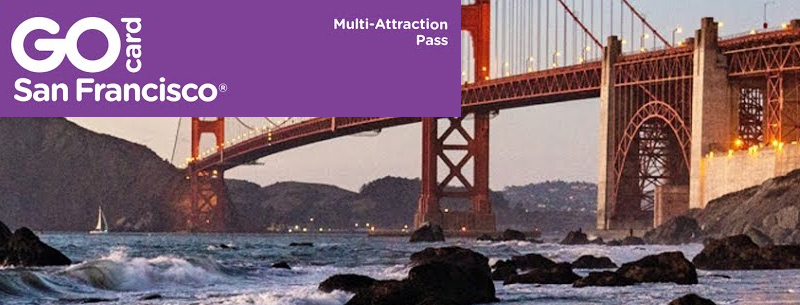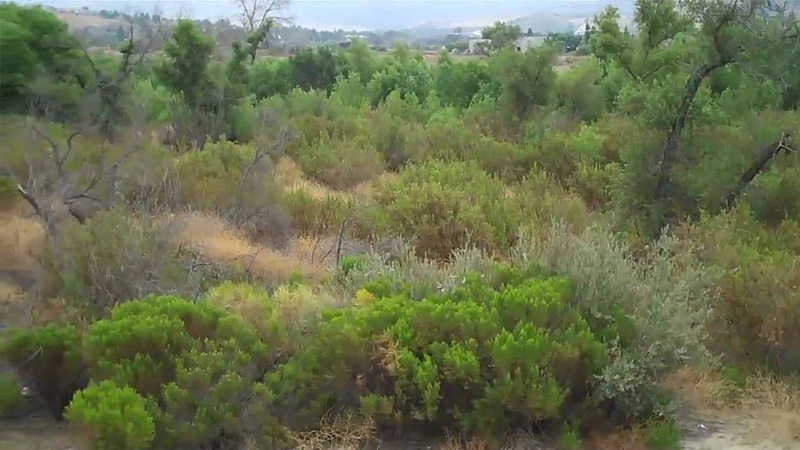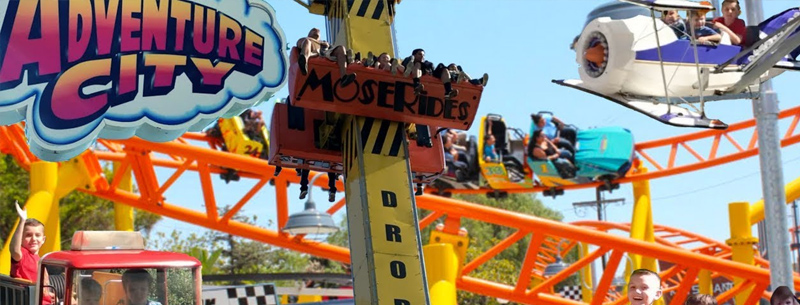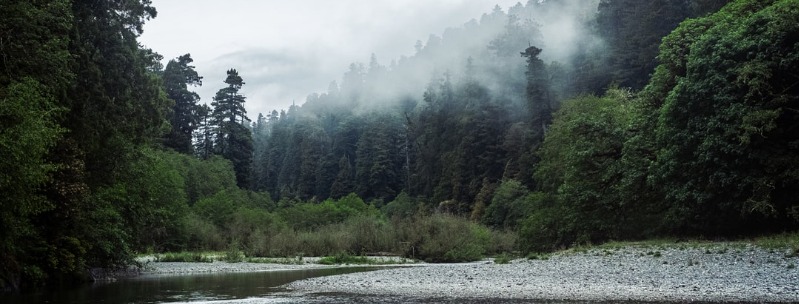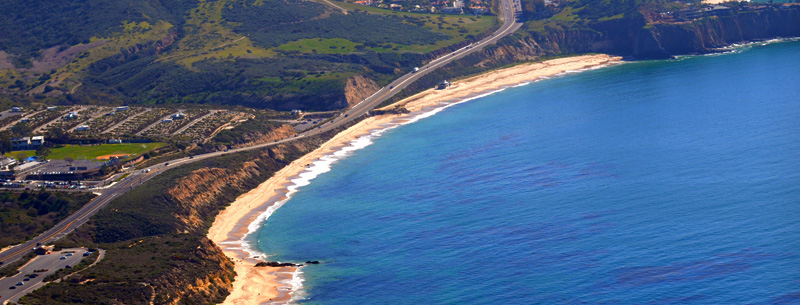2025 California Visitors Guide
California situated on the west coast of the United States, washed by the Pacific Ocean has something to offer everyone, urban landscapes, sea, good weather, lively nightlife, big shopping malls, culture, sports and great natural spaces like the Yosemite National Park, Palm Springs, and the Death Valley. Both urban and wild, California has the sea and the mountains at the door of its cities that benefit from wide-open spaces and a good climate.
The variety and the size of the Golden State, make it impossible to visit all in one go, however long your holiday may be. To make the most of your trip it would be advisable to prepare a journey plan selecting the city or cities (according to the time at your disposal) you intend to see and the sites you intend to take in. To help with your search we have put together selected destinations inclusive of general information and the most interesting sites across various categories.
Beautiful Visitor Destinations
Extending along much of America’s Pacific Coastline, California is one of the country’s most beautiful visitor destinations. Visit the coastal town of Eureka on California’s Redwood Coast, the vineyards of Sonoma and Napa, and stunning Mount Shasta. The capital city of Sacramento is close to destinations throughout the Sacramento Valley as well as the San Joaquin Valley in the south. In the High Sierra, visitors can visit Yosemite, Kings Canyon, and Sequoia National Parks. On the border with Nevada, vacationers can play at the popular destination of Lake Tahoe. Around San Francisco Bay, guests can visit Silicon Valley, Oakland, and, of course, the city of San Francisco. The Central Coast features many beach resorts including Ventura, Big Sur, Santa Cruz, Santa Barbara, and Monterey. Los Angeles, San Bernardino, and Orange County offer beaches, skiing, and attractions such as Disneyland Resort. Adjacent to Mexico, San Diego offers the San Diego Zoo and numerous Mexican-themed attractions. The California Deserts feature Palm Springs, Death Valley, and the Mojave Desert.
Due to the great attention that California and the rest of the United States attract from the media, particularly as the set to movies and TV programs, many of the locations are familiar not just by name but visually too, like Hollywood, Beverly Hills, Sunset Boulevard, Venice Beach, Santa Barbara, and Malibu. The famous Golden Gate Bridge that dominates San Francisco Bay is a very well known site indeed. If we were to summarize California in an image we would certainly choose the deep blue sky and the all-year-round mild climate, which are the basic factors that contribute to the successful growth of this State which even during times of National recession has continued to prosper and develop. First, the “gold fever”, then the development of the cinema industry and today the new technologies and the wine industry continue to boost financial growth. Home to Silicon Valley, the center of the technological development and economic growth of the US can, in fact, be narrowed to the area between San Diego and San Francisco. California continues being the force behind the legendary American Dream and attracts millions of visitors every year.
Areas of California
California Deserts
The California Deserts area possesses a unique beauty. The golf resorts in the area are legendary and numerous and the landscape of Death Valley is memorable. Visit Palm Springs and take a trip on the Aerial Tramway or explore the Palm Springs Desert Museum. Also, be sure to see Joshua Tree National Park, which offers a number of nature trails, nine campgrounds, and year-round bird watching opportunities. Borrego Springs is a burgeoning arts center and a popular gateway for recreation, as it is situated amidst Anza-Borrego Desert State Park. Several annual art shows and the spring Grapefruit Festival are also major draws to Borrego Springs. Located in Barstow is the Route 66 Mother Road Museum, a tribute to the famed Route 66 that showcases a number of photographs and artifacts. At Calico Ghost Town, situated near Yermo, visitors have the chance to tour the town with a historian, witness a gunfight and see a silver mine. Explore >
Central Coast
The Central Coast is made up of the wild coastline and wonderful beaches that California is famous for. In the northern part of the Central Coast, visit beautiful Santa Cruz with its superb beach and the Santa Cruz Beach Boardwalk. Continuing down the Central Coast visit famous Monterey with Cannery Row and the incredible Monterey Bay Aquarium. This eventually leads to the exclusive hamlet of Carmel home to notable celebrities and world-class golfing at Pebble Beach. The waves at Big Sur are legendary and only one of the countless places along the Central Coast that is a paradise for surfers. While here take a look at Point Sur State Historic Park and Lighthouse. Finally, beautiful Santa Barbara is the epitome of a glamorous Central Coast community. Two of many noted attractions here include the Santa Barbara Museum of Natural History and the Plaza de la Guerra. Explore >
East Bay
The East Bay is a small area, but a giant when it comes to ethnic diversity, culture and physical activities. Located east of San Francisco and the Golden Gate Area, East Bay is home to the cities of Berkeley, Fremont, and Oakland, each presenting many options for water sport adventures. In the Oakland area, over 100 languages and dialects are spoken and the wide range of restaurants and shops reflect these varied groups. Berkeley is universally known for the leading education and research facility—the University of California at Berkeley. Many Berkeley theaters, ballets, symphony orchestras, operas, and museums provide exciting cultural entertainment. Hiking and picnics are popular getaways for folks at Mission Peak in Fremont and kids of all ages love the local Skate Park and Karts-N-Golf amusement park. The Oakland Museum of California draws visitors to its impressive galleries, gardens, terraces, and ponds.
Golden Gate Area
The Golden Gate Area is sought out for many attractions, not the least of which is the Golden Gate Bridge, the span that connects the city of San Francisco with Marin County. As well, San Francisco itself offers such well-known attractions as Alcatraz Island, Fisherman’s Wharf and the classic cable cars. While there is much in San Francisco to recommend it as a travel destination, the activities and points of interest extend beyond the city’s boundaries. Summer concerts in Sausalito feature blues and jazz music, while nearby Tiburon is the site of an annual film festival that celebrates both national and international work every March. To the south of San Francisco lies Burlingame and San Mateo, each offering a wide choice of amenities and attractions. The annual 10-day San Mateo County Fair is a popular August attraction and has been a source of local entertainment since the mid-1930s. Explore >
Greater Los Angeles
Greater Los Angeles is made up of many different cities, giving this sprawling metropolis a diverse charm that can’t be found anywhere else in the United States. From Rodeo Drive in Beverly Hills to the art galleries of Santa Monica, visitors to the Los Angeles area would need months to experience all there is to see and do in this Southern Californian region. Pasadena is a well-liked destination, offering a comfortable blend of history and culture that both informs and intrigues. For a livelier, resort-style atmosphere, Long Beach offers shopping, nightlife, and activities for all ages and interests. Some of the other local cities include Torrance, Glendale and Redondo Beach, to name but a few. The area’s aquariums, museums, theaters, and beaches all play a part in affirming Los Angeles’ status as one of the most celebrated California destinations.
Greater San Diego
San Diego is known for its animal attractions, including the San Diego Zoo and SeaWorld, however, there is much to see and do in the surrounding communities as well. Located in Southern California, this region is full of activity, from specialty shops to beaches to art galleries, all of which offer an alternative to the bustle of the big city. One such example is Carlsbad, which boasts the Carlsbad Mineral Water Spa and several golf courses, ideal for a day in the country. Spend some time on the coastline near La Jolla where the Scripps Institution of Oceanography calls home. Operating in conjunction with the local University of California San Diego, this institute has gained a reputation as a leader in oceanographic research. Further north of San Diego is Oceanside, which, as the name implies, offers a range of aquatic activities of fishing, boating and sunbathing and is considered to be the gateway between Los Angeles and San Diego. Explore >
High Sierra
The High Sierra is a beautiful and unspoiled paradise that is a total contrast to the beaches and heat of Southern California. Frequented by lovers of the outdoors, the area boasts the world-renowned Yosemite National Park, which rivals other famous mountain parks in North America for its sheer beauty. King’s Canyon and Sequoia national parks are also within the High Sierra, both of which contain rare natural treasures, such as Crystal Caves, Grant Grove, and Cedar Grove Village. Those looking for an adrenaline rush can embark on a white-water rafting trip on one of the many rivers in the area. During the 1800s, the High Sierra was in the midst of the Gold Rush. While those days are long gone, many historic sites remain for travelers to visit, including Hangtown’s Gold Bug Mine in Placerville and Marshall Gold Discovery State Historic Park in Coloma. Explore >
Humboldt County
Humboldt County is a haven for travelers. It contains more than 100 miles of unspoiled coastline, hundreds of thousands of acres of coast redwood trees, several wild rivers, as well as bustling seaports, quaint farming communities, and historical areas. Throughout the county, travelers will find comfortable accommodations, fine restaurants, and numerous campgrounds.
Inland Empire
The Inland Empire, tucked between powerful Los Angeles to the west and the imposing California deserts to the east, contains the cities of Riverside and San Bernardino. The region boasts a diverse combination of lakes and forests, urban centers and rural wilderness. Big Bear Lake is a haven for winter and summer outdoor enthusiasts. Home to the two ski hills at Big Bear Mountain Resort and year-round fun at Magic Mountain Recreation Area, the district is alive with leisure activities and lodging choices. The city of Ontario hosts the largest outlet mall in California; Riverside is home to the Castle Park entertainment center, and the excitement of NASCAR racing can be found in Fontana at the California Speedway. Village theaters, fishing derbies, art galleries, and festivals are all part of the pleasure when visiting the Inland Empire.
Napa Valley
The Napa Valley lies just east of Sonoma County in an area of California that is best known for its world-class wineries and vineyards. Many of the local attractions include the vineyards in some way, such as limousine wine tasting tours or aerial views of the grapes from a balloon. Health and relaxation spas abound in the Napa Valley and add to the vacation experience for visitors wishing to escape the bustle of larger Californian cities. Other local activities take full advantage of the year-round moderate climate and natural environment, including golfing at the local links and hiking around the Napa hills. The town of Napa is also home to the COPIA Cultural Center, operated by the American Center for Wine, Food and the Arts. The center acts as a venue for live entertainment, food and wine tasting and more. Explore >
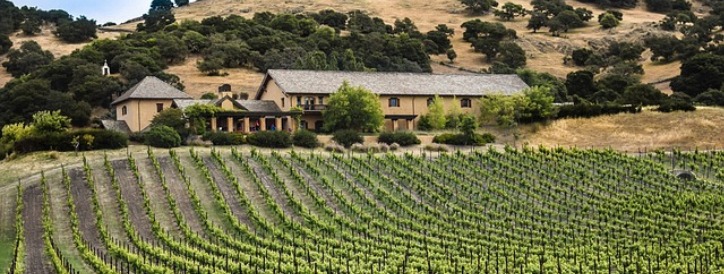
Orange County
The beaches and the Pacific surf are what draw visitors to Orange County, located roughly 30 mi (48 km) south of Los Angeles. Well known around the world as the site of the Disneyland amusement park, this county also boasts a number of parks, luxury resorts, and unmatched shopping opportunities. One of the jewels of Orange County is the Upper Newport Bay Ecological Reserve, which features botanical gardens and activities like kayaking, canoeing, hiking, and fishing. Accessible by boat, the Reserve is California’s largest estuary and is home to several species of native wildlife that can be viewed in their natural habitat. The Santa Ana Zoo is truly a remarkable oasis in the midst of a surprisingly urban environment. The zoo includes a rainforest, a steam train, and a children’s zoo. Laguna Beach, found just south of Newport Beach, is celebrated as an arts community that offers several galleries and museums that showcase local and international artwork. Another popular attraction in Orange County is the foothills of the Santa Ana Mountains, whose peaks provide visitors with views of Los Angeles to the north. Explore >
Redwood Coast
One of the United States of America’s most scenic rural regions, California’s Redwood Coast is a natural paradise. The untouched groves of magnificent redwoods that characterize this area are an awe-inspiring sight. Among the region’s four state parks, including Redwood National State Park, visitors can enjoy over 200 mi (320 km) of trails threaded through a variety of environments, including beaches, cliffs, rivers, and coastal lagoons. Visitors will find a trip to the Redwood Coast means much more than just a chance to see the world’s largest trees. Together, the small towns that call the Redwood Coast home offer a wealth of Victorian architecture and family attractions. The Morris Graves Museum of Art is a jewel for the area’s arts community, boasting seven galleries. The Sequoia Park Zoo, Clarke Historical Museum and the Victorian village of Ferndale are just a few more of the areas most popular destinations. Explore >
Sacramento Valley
The Sacramento Valley boasts a veritable goldmine of history and activities just waiting to be explored by visitors. Gold was discovered in the valley in 1848, prompting miners from around the globe to descend on Sacramento with hopes of striking it rich. Today, visitors can experience the thrill of gold panning and the culture of the Gold Rush era through attractions such as the Sacramento Museum of History, Science, Space & Technology. The valley is also home to the Sleep Train Amphitheatre, a massive open-air art and concert facility with a capacity of 18,500. Located roughly 25 mi (40 km) southeast of the city of Sacramento, the Sutter Creek Theatre is a former silent movie house that now offers a variety of live entertainment. The Indian Springs Wildlife Trust in Penn Valley houses more than 175 birds that visitors can enjoy. Other destinations in the region include Chico, Yuba City, and Marysville. Explore >
San Joaquin Valley
Located in central California, the San Joaquin Valley is known for its agricultural production and recreational activities. One of the attractions in the Valley is the San Joaquin Fair, which takes place every June and features everything from animal shows to local foods. Continuing in the gustatory vein, there is an annual Pizza Festival in Lemoore that showcases bands, crafts and a local celebrity pizza delivery contest. For a more educational and enriching experience, nearby Fresno is home to the Chaffee Zoo, an animal refuge that allows visitors to observe a wide variety of animals. Fresno also boasts three national parks in the immediate area, all of which offer a diversity of activities and outdoor adventure. Bakersfield is another prominent city in the San Joaquin Valley and is famous as the one-time home of country music legend Buck Owens. Mr. Owens used to perform in Bakersfield on a regular basis at the Crystal Palace Steakhouse, which he owned. Explore >
Silicon Valley
When people hear the words Silicon Valley, images of computer chips and technology fill their minds. Silicon Valley does have a technological focus, which allows visitors to San Jose and the surrounding area to engage in some fascinating activities. The NASA Ames Research Center provides exhibits and interactive opportunities for all ages. History enthusiasts appreciate the History San Jose Museum, which features over 500,000 historical artifacts depicting the area’s past. For visitors seeking outdoor pursuits, golfing, kayaking and scuba diving are popular pastimes in Silicon Valley. Sports fans enjoy watching major soccer, minor baseball, pro roller hockey and the San Jose Sharks NHL hockey team. Silicon Valley is also home to a large student population, as there are a number of universities and colleges located in this area. Whether looking for specialty museums, art galleries, eclectic shopping opportunities or visiting a winery, Silicon Valley is guaranteed to please. Explore >
Sonoma County
Synonymous with wine production in the United States, Sonoma County can be found north of San Francisco and just west of the Napa Valley, another famous U.S. wine region. While wine is at the forefront in Sonoma, there are numerous other activities to recommend this area as a travel destination. From the aquatic attractions of the Sonoma Coast to the balloon rides over the expanse of vineyards in the north and south parts of the county, Sonoma welcomes visitors year-round with a choice of accommodations, restaurants, and services that rivals larger California travel stops. The arts are strongly represented in this part of California as well, with numerous potters, painters and more calling Sonoma home, resulting in an impressive collection of galleries. Of course, a trip to this region is not complete without a visit to some of the many wineries and vineyards that dot the landscape.
California Climate
Given the size of California, the climate varies incredibly according to the area. San Francisco has slight variations of temperature between seasons, frequent rain in winter and sunny days from spring to autumn with early morning fog present all year round. South California has a Mediterranean climate, with mild short winters and very hot and torrid summers; the offshore breezes keep the beach climate cooler in summer and warmer in winter. On the Rocky Mountains, winters are frigid and summers are very hot. The Yosemite National Park’s climate is very unstable, especially during spring. The area northeast of Los Angeles is very dry and it is advisable to visit the Death Valley in autumn or spring to avoid the torrid summer temperatures. Summer temperatures reach the mid-30s centigrade and in winter they rarely fall below 12 degrees in the southern regions. The whole of California is generally sunny with a yearly average of 354 days of sunshine.
California Culture
Traditionally Californian people are a fusion of cultures happily mixing together. Tolerance is a stronghold of the Californian way of life attracting people every day who chose to make it their home resulting in a vibrant multicultural society that is reflected in the arts, the food, the music, and film. Franciscan friars entered California in the San Diego area in 1769 to establish the Spanish claim to the region and to convert the Native Americans to Roman Catholicism. By 1823 they had established a chain of 21 missions along the coast, stretching from San Diego north to Sonoma. Protestantism was introduced in California by the early American settlers in the 1830s. Members of the Church of Jesus Christ of Latter-day Saints, or Mormons, came to the state over the Mormon Trail from Utah during the 19th century, and laborers from China and Japan introduced Eastern religions. The first Buddhist temple in the United States was constructed in San Francisco in 1905. In the 20th century, many religious cults and sects became established in California.
The Roman Catholic church now has the largest membership of any denomination, with more than one-quarter of all church members. The largest Protestant sects are the Baptists, Methodists, Lutherans, and Presbyterians. Jewish congregations have many members. In San Francisco is the headquarters of the Buddhist Churches of America. There are mosques in many California cities. The private Henry E. Huntington Library and Art Gallery, in San Marino, contains an outstanding collection relating to English and American literature and history, as well as noted collections of European art, tapestries, furniture, porcelain, and miniatures. Famous works of art are also found in the Crocker Art Museum in Sacramento, the Santa Barbara Museum of Art, the Oakland Museum of California, and the J. Paul Getty Museum, in Malibu. In San Francisco are the M. H. De Young Memorial Museum and the San Francisco Museum of Modern Art. The Los Angeles County Museum of Art is the largest in the western United States. The Norton Simon Museum in Pasadena exhibits paintings by European masters, as well as sculptures from Southeast Asia.
The famed California Historical Society in San Francisco and many local and regional groups maintain collections of California memorabilia. Other museums include the Natural History Museum of Los Angeles County, the Griffith Observatory and Planetarium, the California Museum of Science and Industry in Los Angeles, and the San Joaquin Pioneer Museum and Haggin Art Galleries in Stockton. Since the mid-19th century, when traveling theatrical companies visited the California mining camps, the theatre has been an important part of Californian cultural life. In addition, the growth of the motion picture and television industries in the 20th century attracted many actors to the state and stimulated the growth of legitimate theatre. There are theatres in many Californian cities, and the state is the home of a number of active professional theatre groups. Among the groups are the Buffalo Nights Theater Company, in Los Angeles. An annual summer Shakespeare festival is held in the Old Globe Theatre in San Diego, and classical Greek plays are staged in the Hearst Greek Theater, on the campus of the University of California at Berkeley.
There are fine symphony orchestras in many Californian cities. The most prominent are the San Francisco Symphony Orchestra, founded in 1909, and the Los Angeles Philharmonic Orchestra, founded in 1919. The Hollywood Bowl, in Los Angeles, is famous for the evening concerts held there during the summer months. The San Francisco Opera Association has won national acclaim. Also in the city is a noted music conservatory.
California also has a long tradition of classic jazz, blues, and swing with many festivals across the country such as the Dixieland Jazz Festival in Monterey and in Sacramento amongst the most predominant. California is the home of many professional sports teams. The baseball teams are the San Francisco Giants, the California (Anaheim) Angels, the Los Angeles Dodgers, the San Diego Padres, and the Oakland Athletics. The football teams are the San Francisco 49ers, the Oakland Raiders, and the San Diego Chargers. The basketball teams are the Golden State (Oakland) Warriors, the Los Angeles Lakers, the Los Angeles Clippers, and the Sacramento Kings. The hockey teams are the Los Angeles Kings, the Mighty Ducks of Anaheim, and the San Jose Sharks.
Don’t miss in California
If you are going to California make sure not to miss the Golden Gate Bridge, one of the most famous hanging bridges, 2789m long it crosses the bay linking San Francisco to Marin County. Its image often surrounded by fog is somewhat mysterious, on a clear day, the view over the bay is breathtaking. Cars must pay a 5$ fee when exiting the Bridge at the San Francisco’s end, while it is free at the other end. The bridge can also be crossed by bicycle, in which case it would be nice to return by ferry from Sausalito, which is about 3 miles from the bridge.
Old Sacramento
Old Sacramento on the Sacramento riverbank depicts the city at the time of the Far West. It is like stepping back in time to the Californian gold rush period: historic buildings, museums, and monuments. Everything has been kept as it was including the wooden sidewalks, horse-drawn carriages, and the Mississippi-style riverboats.
San Diego Zoo
San Diego Zoo, the world’s largest Zoo with over 4000 animals living within a contest that closely reproduces their natural habitat. Still, in San Diego, Legoland, Sea World, and Wild Animal Park make a great day out when traveling with children.
Hollywood
Hollywood and the film studios, in particular, Warner Brothers Studios and Universal Studios Hollywood, which is actually a theme park built next to the real studios that can be visited briefly during the Studio Tour on board of an electric train.
Palm Springs
Palm Springs, situated 105 miles south of LA is an oasis in the middle of the Colorado Desert, although with all the water around you would hardly know to be in the desert. Famous for being the getaway of the stars, with more than 50 private clubs, Palm Springs offer palm-lined canyons, cascading waterfalls and interesting desert flora and fauna. There are more than 30000 pools in Palm Springs including Knotts Soak City USA, a large water park with many water rides and a wave pool.
Yosemite Park
Situated in the heart of the Sierra Nevada the Yosemite Park is the image of nature itself with thousands of hectares of forest, great mountains ranging between 600 m and 3960 m, beautiful waterfalls and breathtaking views over the valley. Don’t miss the 900 m high El Capitan, the world’s tallest cliff that with an almost smooth vertical wall is an irresistible challenge for free climbers from all over the world. The Bridalveil Falls and the Yosemite Falls are both an incredible sight and are best seen in late spring or early summer just after the ice melt. The Half Dome, visible from everywhere in the park taking its name from the characteristic shape, has become the symbol of Yosemite.

California Food and Wine
California’s multicultural society is reflected in the many varieties of food available with a predominance of Mexican, Cajun, grilled meat and fresh fish. Eating out is an important part of Californian way of life with a wide range of restaurants offering many types of food from Chinese, Japanese, Thai, and Caribbean to Italian, French, Spanish and Mexican. Breakfast is a very important meal for Californians who often eat this meal out. A typical breakfast consists of omelets, pancakes with fresh fruit and maple syrup, a wide variety of muffins, coffee, and juice. The freshness of the produce is a strong point of food in California, there is even a variety of Farmer’s Markets across the country offering certified farmers’ products. The mild sunny climate favors agriculture placing Californian grown vegetables and fruits among the best in the world. Fresh tomatoes in Modesto, artichokes, avocadoes, plums, oranges, and grapes are only some of the products that are exported the world over.
Californian modern cuisine is a fusion of many influences; oriental, Italian, French and Cajun elements are played around by expert chefs to create delicious dishes. The clam chowder is one of the most typical dishes, as well as crab, fresh fish, barbequed meat and a wide variety of desserts such as Pecan Pie and Chocolate Brownies. Californian wine has gained its place next to the older Italian and French wines. Today Californian wine is well regarded the world over with names such as Opus One, Newton Cabernet, Ruston Stagecoach, Cakebread Chardonnay, Cakebread Cellars Merlot and Silver Oak Cabernet to name but a few.
California History
Before the Mexican and Spanish arrived in California, the native Indians were the only inhabitants who were divided into hundreds of tribes among which Miwoks, Pomes, Chumash, Gabrielenos and Tulares. The arrival of the first colonizers was rather late compared to the east coast over which the French and the English were fighting. The reason being the difficulty to reach the west coast via the Pacific as well as via land, across the vast plains of the unexplored Far West. It was only in 1769 that Father Junipero Serra built the first mission in San Diego including a church, a school, and housing. At the beginning of the 19th century, the Spanish colons settled along with the coastal areas as well as a big Russian community from which the district of Russian Hill in San Francisco originated. In 1822 Mexico became independent getting rid of the Spanish dominance and proclaimed High California a Mexican province. The United States that for a long time had wanted to take control of the western territories didn’t stand by and watched, but declared war to Mexico. The latter, defeated in 1848, had to sign over the Californian province to the US in the Guadalupe Hidalgo Treaty. In that same year, the first gold was found 30 miles east of Sacramento which caused a mad rush, the famous gold rush with people from all over migrating to California in search of fortune. The boom caused a fast growth of the urban centers and in 1850 California became a state; in 1854 Sacramento, which highly benefited from the gold rush, became California’s capital city and it’s been on the move ever since.
The fast economic growth called for the extension of the American railway line to speed up the supplies. Thousands of Chinese immigrants arrived to work on the construction of the rail. In the 1980s a new wave of immigrants came from Vietnam escaping the damage left by the Vietnam War and communism. The last immigration is one of the Mexicans who illegally cross the border to escape poverty in search of a better life. Today Mexicans are the larger ethnic group in the multicultural Californian population. California has always been the land of hope where people go in search of a better life and live the American Dream; the weather, the strong economy, and the tolerant atmosphere make people want to go there. Today, at a time of national economic difficulty, California keeps going strong thanks to the technological industry, the Silicon Valley is the base for major IT market leaders, the Cinema industry, agriculture, and tourism.
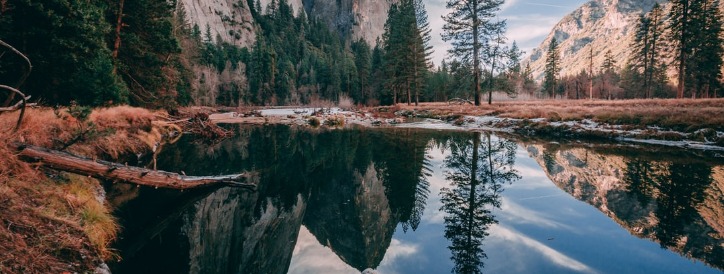
Yosemite National Park
Yosemite National Park was the first one in the world to officially become a national park in 1890 thanks to the work of John Muir. Situated in the heart of the Sierra Nevada the Yosemite Park is the image of nature itself with thousands of hectares of forest, great mountains ranging between 600 m and 3960 m, beautiful waterfalls and breathtaking views over the valley. The Yosemite Valley located in the middle of the park is one of the most impressive glacial valleys in the world. Towered by the impressive granite peaks of El Capitan and Half Dome the valley is characterized by steep slopes surrounding a flat area crossed by the Merced River, which is all is left of the ice bed. The animals are all free including bears, pumas, deer, and squirrels, therefore precautions must be taken not to attract dangerous species.
The best time to visit Yosemite is in summer when the climate is favorable, winters are very cold and the weather in spring is temperamental with often snow as late as April. Unfortunately at the height of summer, the park is full of tourists and even the camping sites are often fully booked. There are 13 camping sites in the park and some of them accept advance bookings, only 4 of them are open all year round. Upon arrival, it is fundamental to stop at the Visitor Centre where the rangers will supply important information about safety and directions in the park including maps for footpaths and cycling trails indicating the difficulty level of each route.
Don’t miss the 900 m high El Capitan, the world’s tallest cliff that with an almost smooth vertical wall is an irresistible challenge for free climbers from all over the world. The Bridalveil Falls and the Yosemite Falls are both incredible sights and are best seen in late spring or early summer just after the ice melts. The Half Dome, visible from everywhere in the park taking its name from the characteristic shape, has become the symbol of Yosemite. The Redwood trees are the biggest trees one could ever see, enormous millennium-old trees with trunks as large as 6m in diameter and 71m tall. They can be seen in the park’s southern part at Wawona and Mariposa Grove, and in Tuolumne Grove on the west side. The people pushed for time can take advantage of the scenic tours, which are organized daily and range from 2 to 8 hours. The park is the perfect place for trekking, free climbing, rafting, and cycling. Ice skating is possible in winter in the Curry Village rink. For more information on the Yosemite National Park contact Wilderness Center at +1 209 372-0308.
